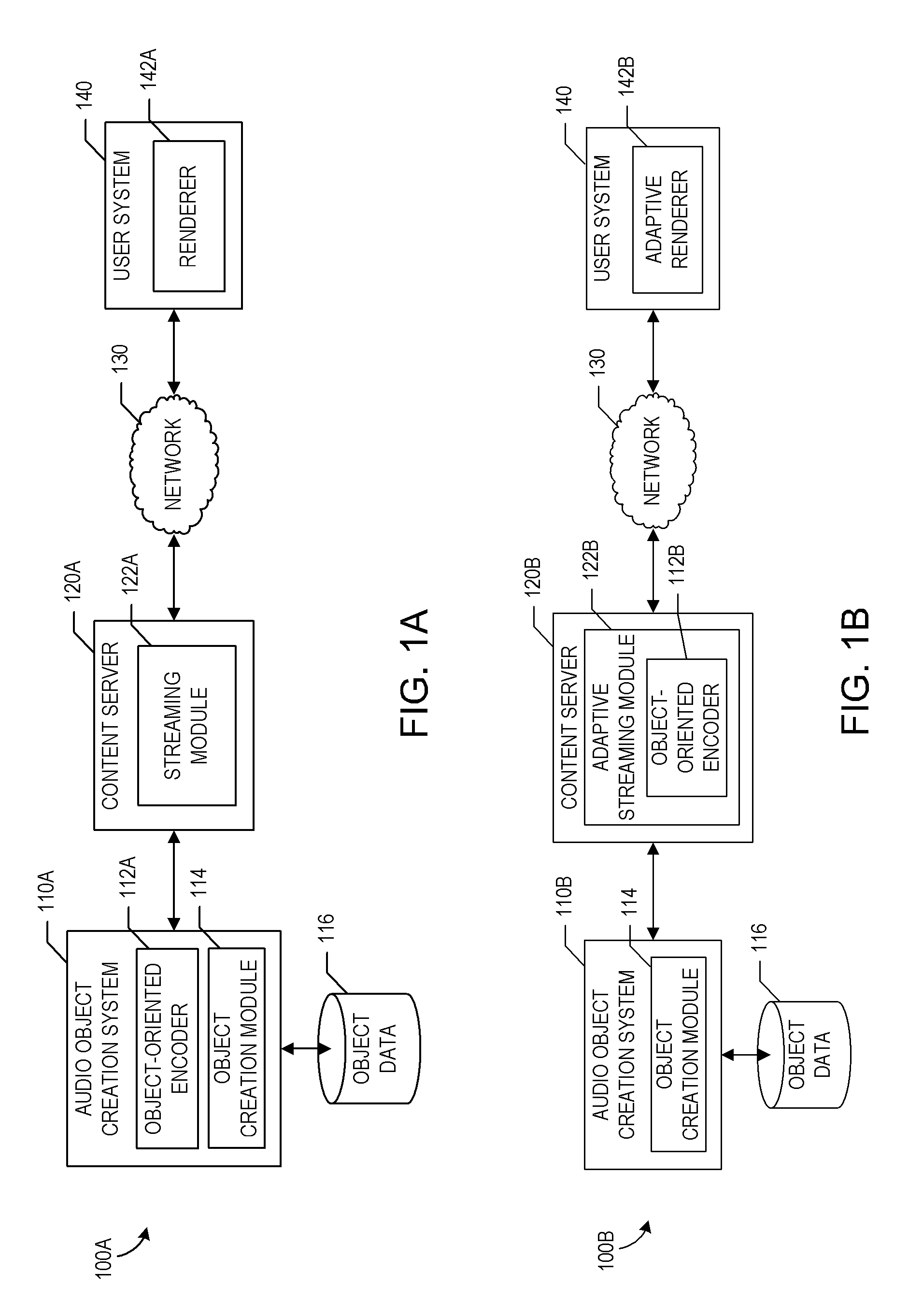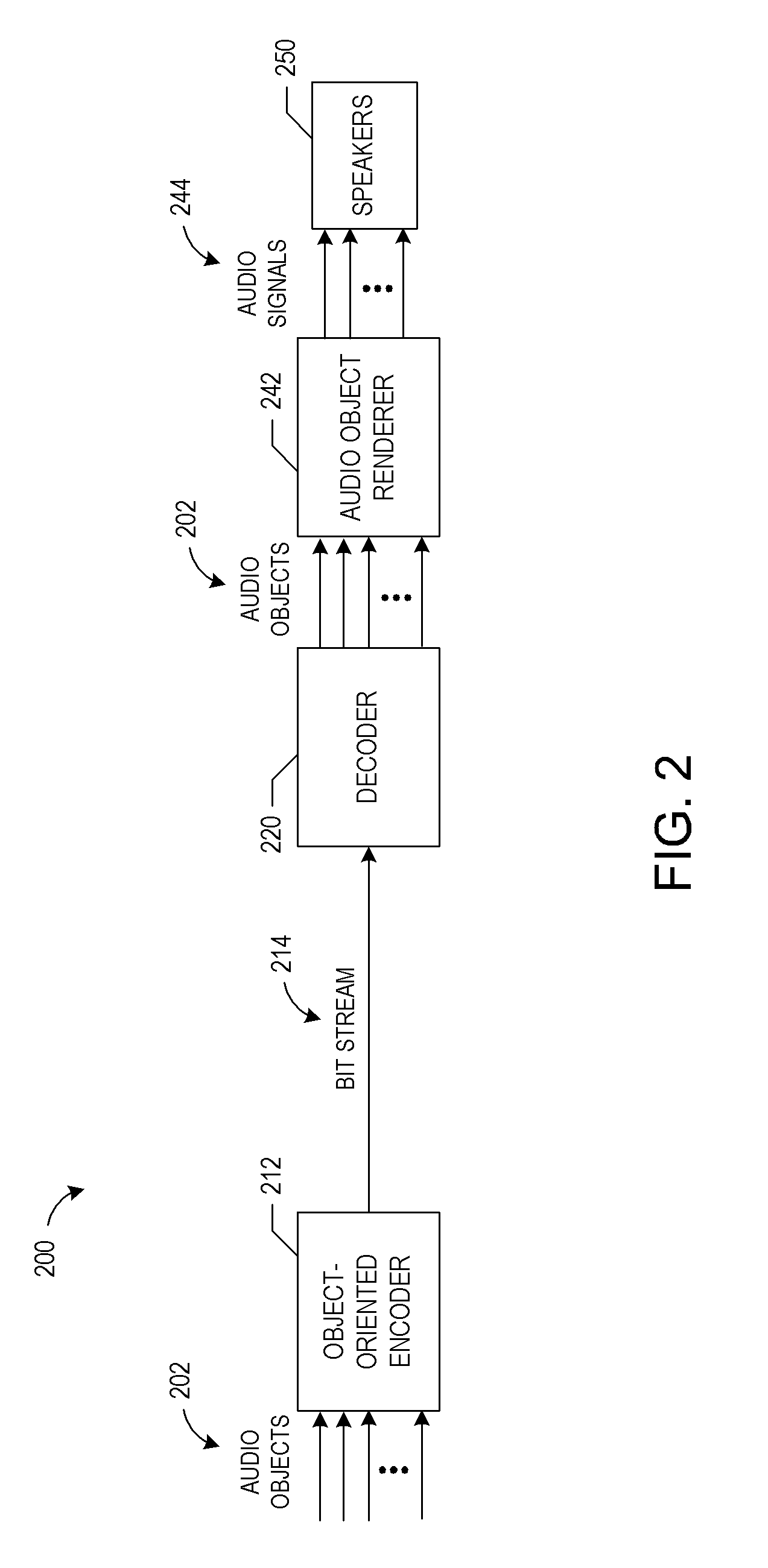Object-oriented audio streaming system
- Summary
- Abstract
- Description
- Claims
- Application Information
AI Technical Summary
Benefits of technology
Problems solved by technology
Method used
Image
Examples
Embodiment Construction
I. Introduction
In addition to the problems with existing systems described above, audio distribution systems do not adequately take into account the playback environment of the listener. Instead, audio systems are designed to deliver the specified number of channels to the final listening environment without any compensation for the environment, listener preferences, or the implementation of psychoacoustic principles. These functions and capabilities are traditionally left to the system integrator.
This disclosure describes systems and methods for streaming object-oriented audio that address at least some of these problems. In certain embodiments, audio objects are created by associating sound sources with attributes of those sound sources, such as location, velocity, directivity, and the like. Audio objects can be used in place of or in addition to channels to distribute sound, for example, by streaming the audio objects over a network to a client device. In certain embodiments, the...
PUM
 Login to View More
Login to View More Abstract
Description
Claims
Application Information
 Login to View More
Login to View More - R&D
- Intellectual Property
- Life Sciences
- Materials
- Tech Scout
- Unparalleled Data Quality
- Higher Quality Content
- 60% Fewer Hallucinations
Browse by: Latest US Patents, China's latest patents, Technical Efficacy Thesaurus, Application Domain, Technology Topic, Popular Technical Reports.
© 2025 PatSnap. All rights reserved.Legal|Privacy policy|Modern Slavery Act Transparency Statement|Sitemap|About US| Contact US: help@patsnap.com



